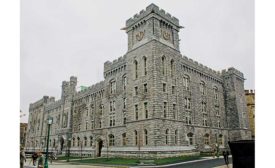New York
ENR New York’s 2019 Best Projects
Pershing Barracks Renovation/Modernization
September 24, 2019
ENR New York’s 2019 Best Projects
Thermally Enhanced Soil Vapor Extraction/Bioremediation at Former Chemical Plant
September 24, 2019
ENR New York’s 2019 Best Projects
Elmira-Corning Regional Airport (ELM) Terminal Revitalization
September 23, 2019
The latest news and information
#1 Source for Construction News, Data, Rankings, Analysis, and Commentary
JOIN ENR UNLIMITEDCopyright ©2024. All Rights Reserved BNP Media.
Design, CMS, Hosting & Web Development :: ePublishing









